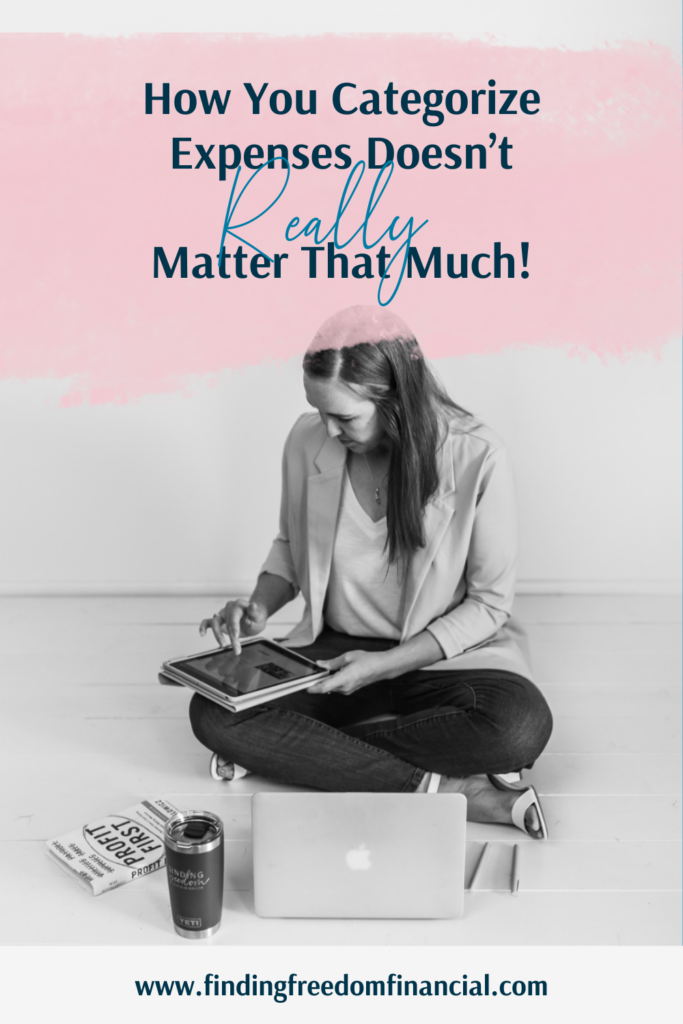How You Categorize Expenses Doesn’t REALLY Matter That Much
One of the most common questions I get asked by business owners who do their own bookkeeping is “How do I categorize the purchase of XYZ?” Many business owners are so hung up on making sure they categorize expenses correctly and call them the “right” thing, when in reality…
…it doesn’t matter.

Or, at least it doesn’t matter as much as you might think.
As a general rule, anything that you spend money on that is ordinary (meaning other business owners in your industry spend money on it too) and necessary (meaning that this purchase is essential in you operating your business), it is 100% deductible – no matter what you call it.
There are a few exceptions and limits around business meals & gifts, and it’s important to remember that your inventory purchases are considered an ASSET, not an expense. But pretty much anything else – call it whatever you want!
…Your monthly Canva subscription? You can call it “Software Expense”, “Software & Apps”, “Subscription Expense”, “Office Supplies” – or whatever else floats your boat!
I have 2 general rules when it comes to how you should be categorizing your expenses. Let’s take a look at them together.
Rule #1: Categorize Expenses so They Make Sense to You
You should be able to look at your Profit & Loss statement every month and know exactly where all your different types of expenses fall. If you use a software (which I HIGHLY recommend you do), feel free to rename the different default expense categories and use terms that are clear to you.
Rule #2: Categorize Expenses in A Consistent Manner
If you choose to group your Canva expenses in with other Software Expenses, make sure you are ALWAYS putting it in that bucket. This will help you be able to compare your expenses from month to month or year to year, and be able to accurately compare these expenses.
So, don’t worry so much about HOW you’re grouping these types of expenses, and just make sure that it makes sense to YOU! You are the business owner, and your finances should be organized in a way that’s clear for you to understand.
Then, When in Doubt, Add A New Account!
Here’s a little bonus tip for you. If you start paying for a new type of expense, and it doesn’t REALLY fit into any of the expense categories you already have – then just create a new expense account! Again, your chart of accounts is meant to be customized for YOUR business needs. You don’t need to try and “make it fit” into a template. (However, if you want a customized retail template to start with, you can grab mine here).
I hope this helped you feel a little more relaxed & at ease as you do your own bookkeeping, and takes some of the pressure off! If you want help feeling even MORE confident in your bookkeeping this year, then I would love to invite you to join my free masterclass. You can register for a time that works for you here.
Hi, I’m Megan!
Bookkeeping for the retail industry has some unique complexities that take extra time to manage to ensure accuracy. At Finding Freedom Financial Services, I provide done-for-you bookkeeping services for boutique owners that accurately track these complexities for you so you can have more time and focused energy to dedicate to running your stores. If you’re ready to get your time back, apply to work with me today!
